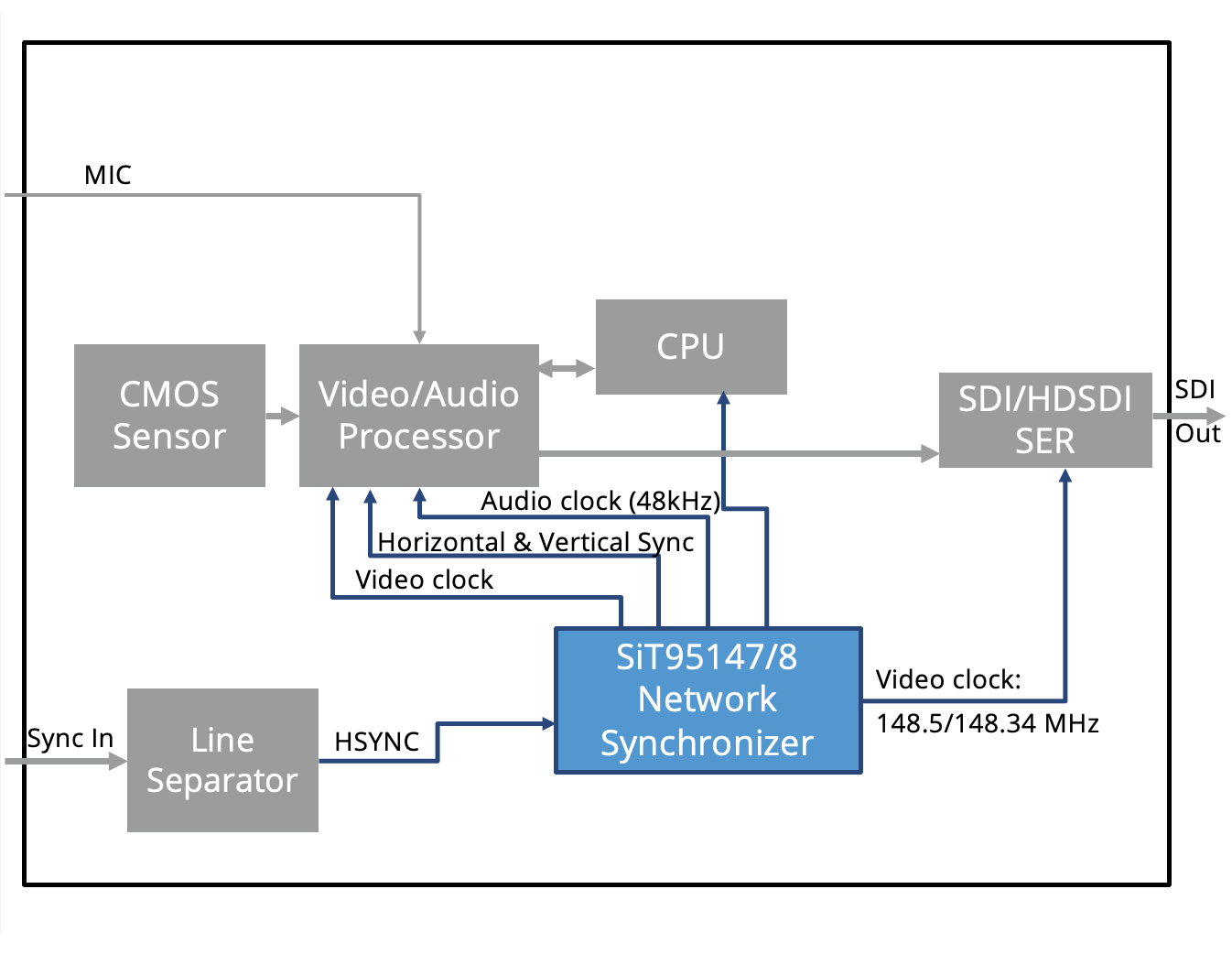Getting Your Game On—Precision Timing from Kick-Off to Final Touchdown

If you are a football fan, getting the right camera angle delivered at the right time, synchronously to your television set, is critical for your game-day viewing experience. Whether it’s from a bird’s eye drone, a field-side handheld or another perspective, the video feed, orchestrated together with audio, gives you the real-time sequence of events and a cohesive understanding of the game. That is, if the data transmission timing is right and the broadcast systems are in sync.
The best live broadcast viewing experience requires a great deal of engineering complexity. Massive amounts of data must be transmitted through electronic systems of varying bandwidths, performance requirements and interfaces—from field to production facility to the cloud and the satellite and eventually the stream to your television set. In the dynamic world of broadcast production, precise timing and synchronization of the data transmission is the backbone of efficient video processing and seamless transitions.
This blog dives into critical aspects of timing and synchronization challenges and solutions in live broadcast. From kick off to final touchdown it’s all about precision.
Picture Perfect Stream: Precision Timing in the Studio
The complexity of modern studios—equipped with multiple cameras, audio inputs, and video processors—requires a meticulous approach to timing and synchronization. When working with multiple cameras or video sources in a studio, synchronization ensures that switching between feed sources is seamless. A lack of synchronization can result in glitches, delays, or degraded video quality during transitions, compromising the overall production value.
Synchronization to a reference time enables switching equipment to seamlessly transition between video sources without the need to buffer or re-synchronize input signals. A master sync generator serves as the central timing source for all video equipment in a production studio. This generator distributes a common master synchronization signal, known as generator lock (genlock). An example of this in a composite video signal is a black burst which is a type of genlock with a black video frame that includes timing information for syncing and is used for all connected video sources and processors.
Things get more complex with video signals from remote sources, such as outside broadcast cameras in football stadiums that may not have access to the master genlock signal. These signals often arrive to the production studio unsynchronized, posing a challenge for integration into the studio workflow. In these cases, frame synchronizers act as intermediaries, buffering incoming video signals and aligning their timing with the studio’s master synchronization source. The process involves re-timing the remote video signal to produce a genlocked SDI output synchronized to the in-studio broadcast equipment. The capability is essential for integrating remote footage into live broadcasts, ensuring that all signals are consistent and synchronized, regardless of their origin.
This orchestration ensures that all cameras, mixers, and processors are "speaking the same language" in terms of timing, avoiding visual or auditory misalignment. Precise synchronization eliminates delays and ensures a cohesive output.
A broadcast network typically employs various transmission equipment types, each requiring specific timing components. These components may include single-ended clocks for general-purpose timing, low-jitter differential clocks essential for serializer/deserializer (SERDES) applications, and specialized synchronization devices to support standards like IEEE 1588 or audio video bridging/time-sensitive networking (AVB/TSN).
Professional Video Camera Synchronization
Professional video cameras are at the heart of studio production, and their performance relies on precise synchronization. Here’s how synchronization cascades through a typical camera setup:
-
Genlock for synchronization: Cameras synchronize their video processor sampling clocks, sync pulses, and serial digital interface (SDI) clock to the studio’s master synchronization signal via genlock. This ensures that all cameras are perfectly aligned with the studio’s timing reference.
-
Low-jitter clocks: The video processor requires a clock with exceptionally low jitter (unwanted timing variations) because any timing inconsistencies directly affect the performance of the analog-to-digital (A/D) converter. High jitter can degrade the signal-to-noise ratio, impacting video quality.
-
Audio-video synchronization: Microphone audio signals are digitized using an audio processor. The audio sampling clock is synchronized with the video clock to ensure that the audio and video streams are perfectly aligned when embedded into the SDI stream.
-
Horizontal synchronization (HSYNC): An HSYNC signal is extracted from the composite video signal generated by the master sync generator. To do this, the composite video signal, including the black burst reference, is fed into a sync separator. This separator eliminates undesirable parts of the signal and isolates the timing data. This extracted HSYNC signal is locked to a timing generator. The generator filters jitter from the signal and produces a stable video sampling clock.

Professional video camera example using SiT95147/8 single-chip MEMS network synchronizer to synchronize the camera’s processors.
SiTime is a leader in precision timing, delivering silicon MEMS-based solutions ideal for broadcasting equipment. We provide a number of timing solutions for live broadcasts including our Cascade™ clock-system-on-a-chip family. The Cascade family includes network synchronizers, jitter cleaners and clock generators. These devices overcome quality and reliability issues associated with traditional quartz timing solutions. Because the Cascade family integrates a MEMS resonator into the clock, there is no need for a quartz reference device. This increases system resiliency and eliminates the inherent weakness of quartz crystals such as activity dips and sensitivity to shock and vibration. Additionally, by integrating the resonator, it eliminates a device on the board, minimizing the space allocated to timing and streamlining PCB board design.
In addition to the Cascade clock family, SiTime offers a complete lineup of silicon MEMS-based oscillators for broadcast, including low-jitter differential-ended oscillators, TCXOs and OCXOs that offer better performance and lower power consumption compared to traditional quartz crystal alternatives, plus important features like digital control for easily fine-tuning output frequency.
Highly Precise Timing Hardware Is Critical for Live Broadcast
From the precise alignment of video and audio signals to the seamless integration of remote feeds, synchronization enables broadcasters to deliver professional-grade content to their audiences. The use of master sync generators, HSYNC signals, and advanced tools like frame synchronizers ensures that every component of the studio operates in harmony. Using MEMS-based silicon precision timing chips offer superior stability that can reduce the need for constant re-synchronization in high-data-rate applications, news, entertainment and live sports broadcasts, where multiple cameras are feeding data into the centralized processing hub. Precision timing ensures that all these streams stay in sync, so when the broadcast reaches your home, it looks smooth and uninterrupted.